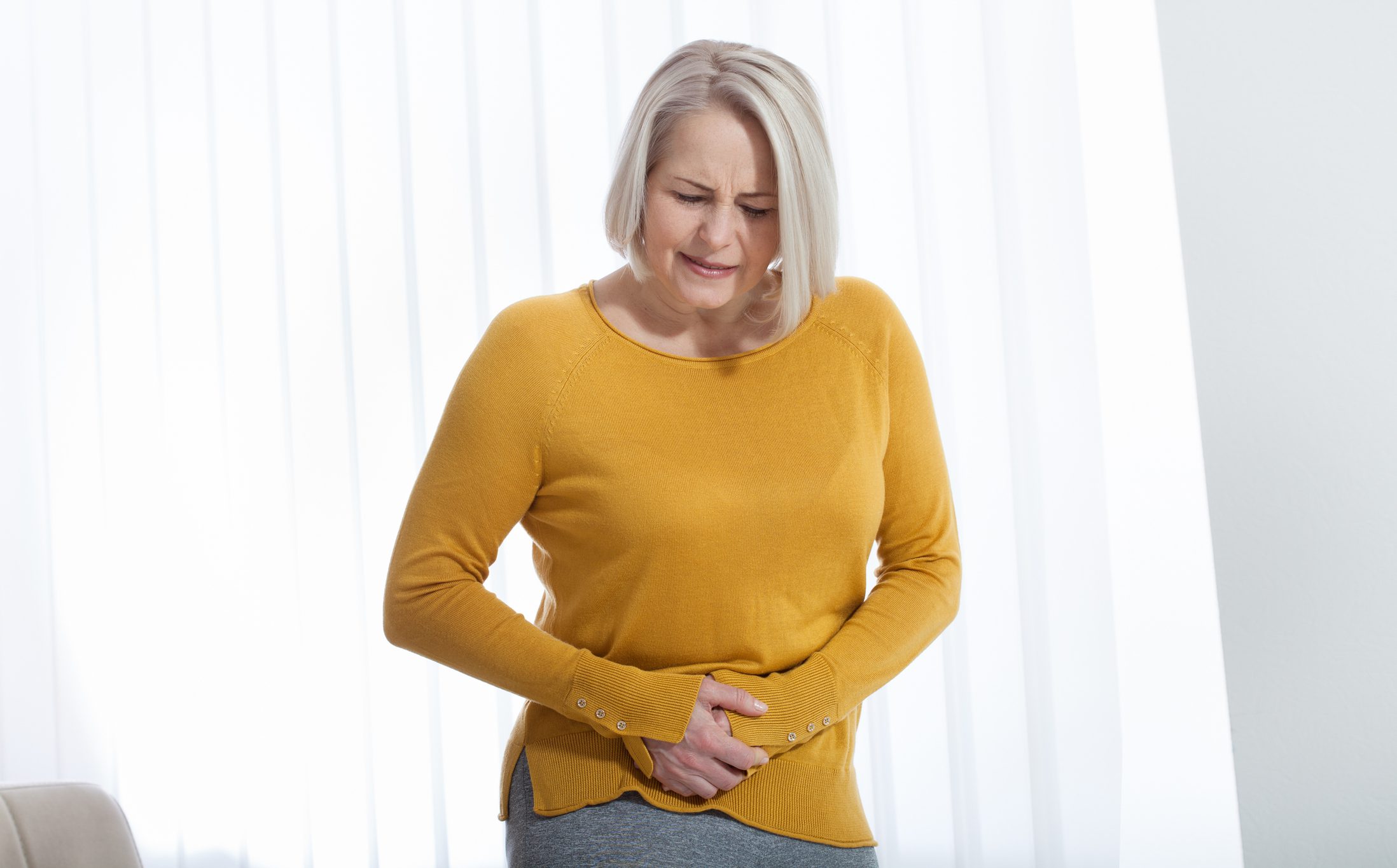Hormonal shifts during menopause can throw your body for a loop with a decline in estrogen and progesterone levels. This rollercoaster ride often takes a toll on essential aspects of your health, like your metabolism, bone density, and muscle mass.1
Lower estrogen and progesterone levels that can occur during this transition set the stage for issues like osteoporosis and sarcopenia, putting your bone and muscle health at risk.2, 3 On top of this, an increased risk of insulin resistance can pave the way for weight gain and metabolic problems.4
The antidote for these menopausal woes? Lifting heavy things.
Strength training (also known as resistance training) can do wonders for boosting bone density, preserving precious muscle mass, and supporting your metabolic well-being. It’s not just about building muscle; it's about building resilience, which can be incredibly valuable during menopause.
5 Ways Resistance Training Can Help You During Menopause
1. Preserves Bone Density
Around 40% of postmenopausal women may experience fractures in their lifetime, a concerning statistic that highlights the impact of aging on bone health, especially around menopause. Osteoporosis and fractures become significant risks due to substantial bone loss during this phase.5
Weight-bearing exercises like resistance training stimulate bone remodeling, or the process of replacing old bone tissue with newer, stronger tissue.6 This targeted stimulation improves bone mineral density (a key indicator of bone health) and strengthens bones, particularly in fracture-prone areas like the spine and hips.
By subjecting your bones to healthy stress through lifting weights, you prompt osteoblasts, the cells responsible for bone formation, to generate new bone tissue. Over time, this continual process of bone remodeling leads to improved bone mineral density, resulting in bones that are not only stronger but also more resilient against fractures.7
2. Builds and Maintains Muscle
After 30, muscle mass decreases by about 3-8% every decade. Once you reach 60, that rate accelerates. This loss of muscle mass, strength, and function significantly contributes to disability as you get older.8
Resistance training counteracts the age-related decline in metabolic rate and muscle mass and reduces the risk of sarcopenia—a condition characterized by decreased muscle mass, strength, and function, which can lead to mobility issues, frailty, and an increased risk of falls and fractures.9, 10
Resistance training also enhances your functional capabilities and helps you maintain a higher quality of life. You can more easily perform daily activities such as lifting groceries, climbing stairs, or getting up from a chair without assistance—things that may not be much of an issue now, but you’ll want to prevent them from becoming a problem later.
3. Improves Metabolism
Over 43% of menopausal women struggle with obesity, and about 20% of women find themselves facing unwanted weight gain of 10 pounds or more during menopause.11
What's more, your risk of metabolic syndrome—a cluster of conditions including high blood pressure, elevated blood sugar, excess amounts of dangerous visceral fat, and unhealthy cholesterol levels—skyrockets, paving the way for insulin resistance, heart disease, stroke, and type 2 diabetes.12
Increasing muscle mass improves your basal metabolic rate, meaning you burn more calories even at rest.13 Muscle tissue also plays a significant role in how your body uses glucose. Think of resistance training as creating a larger sponge for glucose absorption and storage, helping to keep blood-sugar levels in check.14
Resistance training also improves your body’s ability to use stored fat for energy. This can lead to better body composition, with a greater proportion of lean muscle mass and lower amounts of body fat.15
4. Supports Joints
Joint stiffness affects over half of women during menopause, contributing to discomfort and reduced mobility.16 Strength training provides added support and stability by strengthening the muscles surrounding your joints, reducing the strain on your joints, and alleviating pain.17 This is particularly critical during menopause when hormonal changes can worsen joint stiffness and discomfort.
Resistance exercises also improve your range of motion, making movements smoother and more comfortable. This increased flexibility makes everyday activities easier. Better balance and stability also reduce your risk of accidents and support long-term joint health and mobility.18
5. Improves Mental Health
As if menopause weren’t challenging enough, it can also bring about an increased risk of depression and anxiety.19
Resistance training can reduce stress and boost your mood by triggering the release of endorphins (feel-good hormones).20 Seeing your strength and physical abilities improve also improves your self-esteem and body image.
Resistance training also helps you maintain a healthy brain, reducing your risk of cognitive decline associated with aging and menopause.21 Strength exercises stimulate the production of growth factors in your brain that promote the growth of new neurons and improve your brain's ability to form connections and adapt to new information.22
Strength training also improves blood flow to your brain, delivering oxygen and nutrients essential for optimal brain function. This increased blood flow can boost your brain’s performance, including memory and attention.23
By fostering mental and emotional resilience, strength training equips you with the psychological strength to face the challenges of menopause with confidence. This newfound strength empowers you to navigate through the ups and downs of menopause with grace and confidence.
A Cheat Sheet to Design Your Resistance-Training Plan
My free Resistance Training Cheat Sheet offers a comprehensive approach to fitness that can help you through the physical and hormonal changes during menopause. I've provided everything you need for your fitness journey, including home gym essentials, an eight-week workout plan, and a progress tracker to track your sets, reps, and weights with each workout.
Whether you're new to resistance training or want to revamp your current plan, this guide will help you optimize your workout results and help you better manage menopause.
Get your FREE Resistance Training Cheat Sheet here.
References:
- Sipilä S, Törmäkangas T, Sillanpää E, Aukee P, Kujala UM, Kovanen V, Laakkonen EK. Muscle and bone mass in middle-aged women: role of menopausal status and physical activity. J Cachexia Sarcopenia Muscle. 2020 Jun;11(3):698-709. doi: 10.1002/jcsm.12547. Epub 2020 Feb 3. PMID: 32017473; PMCID: PMC7296268.
- Cheng CH, Chen LR, Chen KH. Osteoporosis Due to Hormone Imbalance: An Overview of the Effects of Estrogen Deficiency and Glucocorticoid Overuse on Bone Turnover. Int J Mol Sci. 2022 Jan 25;23(3):1376. doi: 10.3390/ijms23031376. PMID: 35163300; PMCID: PMC8836058.
- Buckinx F, Aubertin-Leheudre M. Sarcopenia in Menopausal Women: Current Perspectives. Int J Womens Health. 2022 Jun 23;14:805-819. doi: 10.2147/IJWH.S340537. PMID: 35769543; PMCID: PMC9235827.
- Marsh ML, Oliveira MN, Vieira-Potter VJ. Adipocyte Metabolism and Health after the Menopause: The Role of Exercise. Nutrients. 2023 Jan 14;15(2):444. doi: 10.3390/nu15020444. PMID: 36678314; PMCID: PMC9862030.
- Finkelstein JS, Brockwell SE, Mehta V, Greendale GA, Sowers MR, Ettinger B, Lo JC, Johnston JM, Cauley JA, Danielson ME, Neer RM. Bone mineral density changes during the menopause transition in a multiethnic cohort of women. J Clin Endocrinol Metab. 2008 Mar;93(3):861-8. doi: 10.1210/jc.2007-1876. Epub 2007 Dec 26. PMID: 18160467; PMCID: PMC2266953.
- Endocrine Society: Menopause and Bone Loss
- Harvard Health: Strength training builds more than muscles
- Volpi E, Nazemi R, Fujita S. Muscle tissue changes with aging. Curr Opin Clin Nutr Metab Care. 2004 Jul;7(4):405-10. doi: 10.1097/01.mco.0000134362.76653.b2. PMID: 15192443; PMCID: PMC2804956.
- Siparsky PN, Kirkendall DT, Garrett WE Jr. Muscle changes in aging: understanding sarcopenia. Sports Health. 2014 Jan;6(1):36-40. doi: 10.1177/1941738113502296. PMID: 24427440; PMCID: PMC3874224.
- Cleveland Clinic: Sarcopenia (Muscle Loss): Symptoms & Causes
- Knight MG, Anekwe C, Washington K, Akam EY, Wang E, Stanford FC. Weight regulation in menopause. Menopause. 2021 May 24;28(8):960-965. doi: 10.1097/GME.0000000000001792. PMID: 34033603; PMCID: PMC8373626.
- Bermingham KM, Linenberg I, Hall WL, Kadé K, Franks PW, Davies R, Wolf J, Hadjigeorgiou G, Asnicar F, Segata N, Manson JE, Newson LR, Delahanty LM, Ordovas JM, Chan AT, Spector TD, Valdes AM, Berry SE. Menopause is associated with postprandial metabolism, metabolic health and lifestyle: The ZOE PREDICT study. EBioMedicine. 2022 Nov;85:104303. doi: 10.1016/j.ebiom.2022.104303. Epub 2022 Oct 18. PMID: 36270905; PMCID: PMC9669773.
- McPherron AC, Guo T, Bond ND, Gavrilova O. Increasing muscle mass to improve metabolism. Adipocyte. 2013 Apr 1;2(2):92-8. doi: 10.4161/adip.22500. PMID: 23805405; PMCID: PMC3661116.
- Turcotte LP, Fisher JS. Skeletal muscle insulin resistance: roles of fatty acid metabolism and exercise. Phys Ther. 2008 Nov;88(11):1279-96. doi: 10.2522/ptj.20080018. Epub 2008 Sep 18. PMID: 18801860; PMCID: PMC2579902.
- Muscella A, Stefàno E, Lunetti P, Capobianco L, Marsigliante S. The Regulation of Fat Metabolism During Aerobic Exercise. Biomolecules. 2020 Dec 21;10(12):1699. doi: 10.3390/biom10121699. PMID: 33371437; PMCID: PMC7767423.
- Magliano M. Menopausal arthralgia: Fact or fiction. Maturitas. 2010 Sep;67(1):29-33. doi: 10.1016/j.maturitas.2010.04.009. PMID: 20537472.
- Healthline: 5 Ways to Strengthen Your Joints
- Better Health Channels: Resistance training – health benefits
- Alblooshi S, Taylor M, Gill N. Does menopause elevate the risk for developing depression and anxiety? Results from a systematic review. Australas Psychiatry. 2023 Apr;31(2):165-173. doi: 10.1177/10398562231165439. Epub 2023 Mar 24. PMID: 36961547; PMCID: PMC10088347.
- Mayo Clinic: Exercise and stress: Get moving to manage stress
- Chen ML, Wu YJ, Lee MJ, Hsieh SL, Tseng IJ, Chen LS, Gardenhire DS. Effects of Resistance Exercise on Cognitive Performance and Depressive Symptoms in Community-Dwelling Older Chinese Americans: A Pilot Randomized Controlled Trial. Behav Sci (Basel). 2023 Mar 9;13(3):241. doi: 10.3390/bs13030241. PMID: 36975266; PMCID: PMC10045556.
- Neuroscience News: Exercise and the Brain: The Neuroscience of Fitness Explored
- Mandolesi L, Polverino A, Montuori S, Foti F, Ferraioli G, Sorrentino P, Sorrentino G. Effects of Physical Exercise on Cognitive Functioning and Wellbeing: Biological and Psychological Benefits. Front Psychol. 2018 Apr 27;9:509. doi: 10.3389/fpsyg.2018.00509. PMID: 29755380; PMCID: PMC5934999.
*These statements have not been evaluated by the Food & Drug Administration. Products mentioned are not intended to diagnose, treat, cure, or prevent any disease. The views in this blog by JJ Virgin should never be used as a substitute for professional medical advice. Please work with a healthcare practitioner concerning any medical problem or concern.





